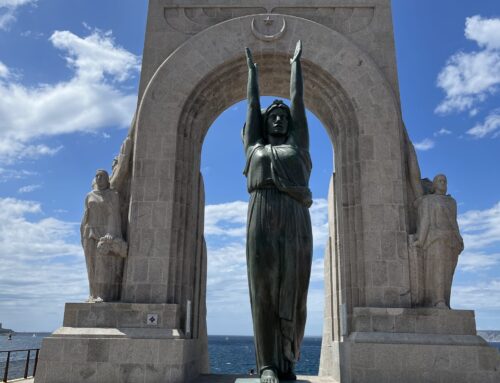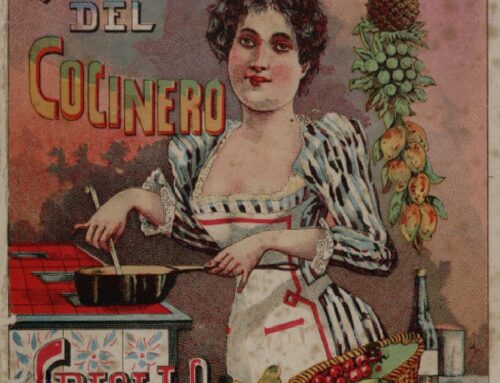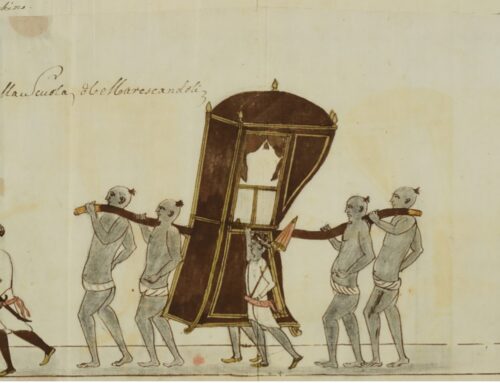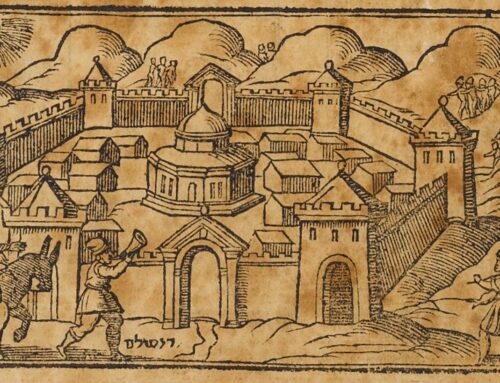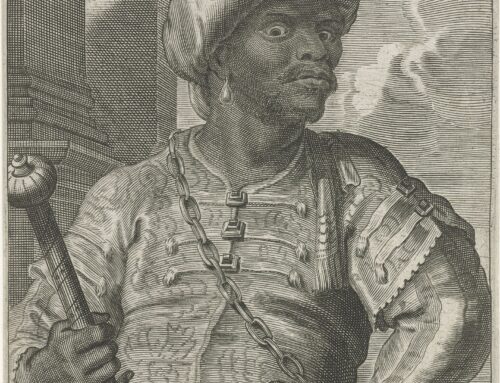A portrait of Maria Clementina Sobieski (1702-1735) overlooks the left aisle of St Peter’s Basilica in Rome. It forms part of an elaborate monument to her memory, commissioned by Pope Clement XII, after her death in 1735, designed by Filippo Barigioni, with sculptures by Pietro Bracchi and a mosaic by Pietro Paulo Cristofari. Queen Clementina, the wife of James Francis Edward Stuart, the Jacobite claimant to the British throne and granddaughter of the Polish king John III Sobieski, had in the years before her death devoted her life to her faith, and especially the practice of charity, giving to the poor and serving them in hospitals. Her death, following a period of strict self-denial, including limited food, was treated as evidence of her saint-like existence and immediately capitalised on by the Church and her family. Clementina was presented as a model of piety, her status as queen marking her life the more remarkable while simultaneously affirming the power of the Church.
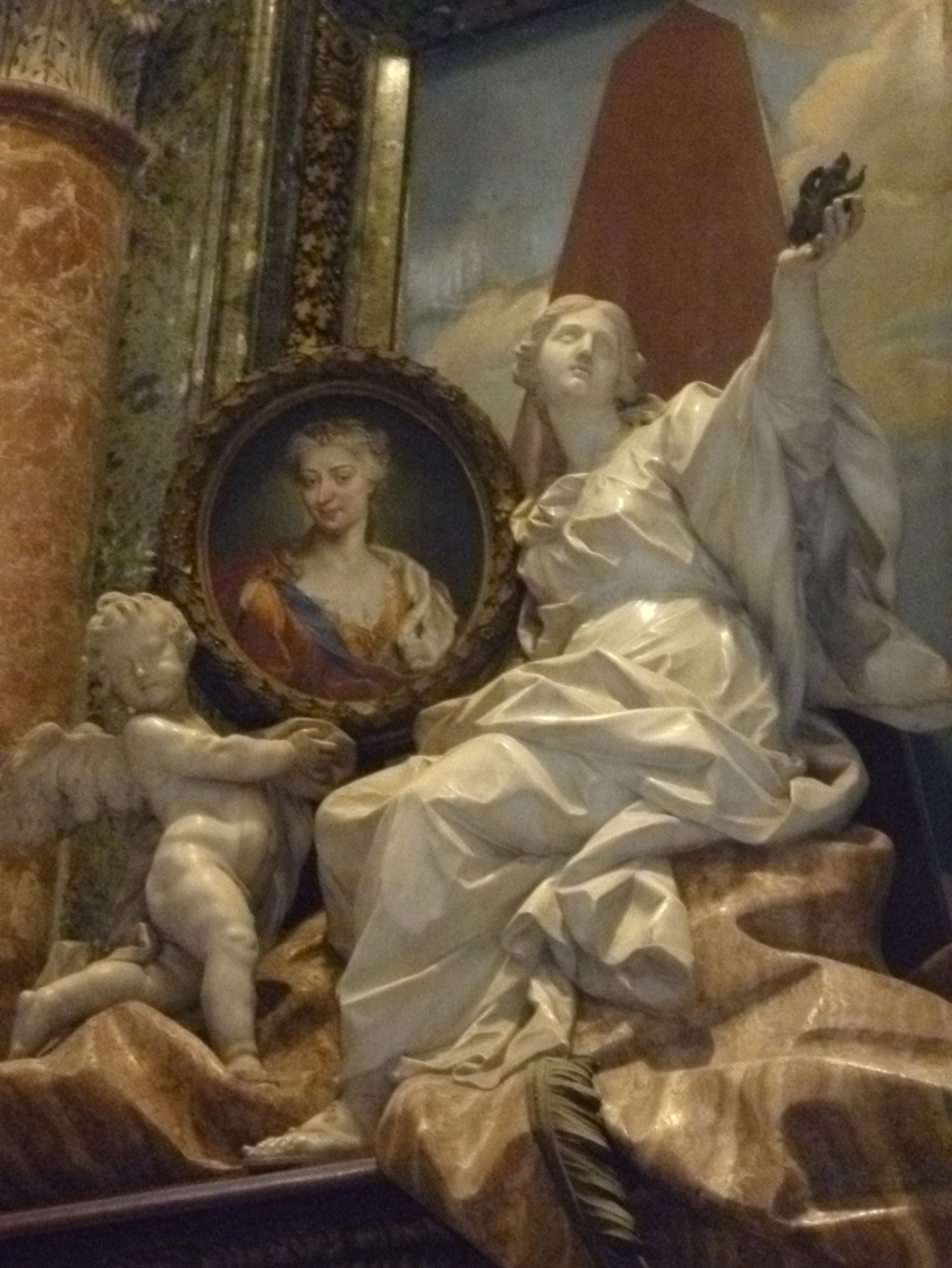
Figure 1: Maria Clementina Sobieski Memorial, St. Peter’s Basilica, Rome, CC 3.0 Kim Traynor.
Clementina was a Jacobite queen. The mosaic portrait shows her in Stuart colours, wearing the blue sash of the Order of the Garter of which she was a member, and two putti carry a crown and sceptre, symbols of monarchical power and divine right. Much more prominently, Clementina is linked with an iconography of charity. The statue consisted of a woman surrounded by three children, a representation of charity that had been popular since the fourteenth century. This charity held a portrait of Clementina in one arm. In her other outstretched hand, she held forth a flaming heart, the symbolic representation of caritas, the love that bound together the Christian community. Behind them a pyramid rises into the sky, representing eternity. Clementina is commemorated as a queen, but also as a religious icon, due to her pious life and loving actions. As the pyramid suggests, the monument is intended to secure her memory for generations to come and it does so in a church in a city where Clementina found herself more from circumstance than choice.
The Stuart family relocated to Rome in 1719. They had been exiled from the United Kingdom in 1688, when James II and VII was deposed, and moved to Saint-Germain-En-Laye. Following the Jacobite uprising of 1715, led by Clementina’s husband James Francis Edward Stuart, the family were no longer welcome in France, and were offered patronage by the Papacy, who recognised their claim to the throne as Catholic monarchs. They finally settled in Rome, when Pope Clement XII offered the family the Palazzo del Re as a residence, alongside a generous stipend. Through his patronage, the Stuarts were able to establish a Royal court in Rome, a life of luxury and splendour, marked by their patronage of the arts, particularly painting and music, and a base through which to consolidate their political relationships across Britain, not least with an elite for whom a trip to Rome formed an important stop on a Grand Tour. And yet, James Francis Edward Stuart suffered from melancholy and his wife retreated into a religious practice that likely contributed to her death. Exile had emotional impacts that wealth, sociability, and patronage alone could not overcome.
A scholarship on exile has noted the importance of finding belonging and a sense of place to mental health and wellbeing and the challenges that this posed to those dislocated from their homelands, particularly against their own desires. Many migrants found art an important resource in confronting loneliness and establishing place. Migrant communities often introduced features of their homeland architecture or landscaping to their new residences, creating a hybrid style of old and new. Interior decoration provided opportunity to curate a space for comfort, security and identity in a new location. Writing, theatre and other forms of art practice have offered many migrants a site to confront the challenges of displacement and to create solidarity or shared recognition of the associated feelings of loss and loneliness. Studies of the art commissioned by those in exile, particularly royal courts, are now numerous, often viewed as a mechanism through which the elite maintained their authority and social position, even as the foundations of their power shifted. Yet, such work can also be explored as a tool through which an exiled elite, like other migrants, came to terms with their new placement, and its possibilities for their lives.
Much of the art commissioned by the Stuarts has highlighted its function as a form of propaganda that affirmed their place as the rightful claimants to the British throne and acted to encourage the love of a loyal following. Within such works, the Stuarts displayed their connections to Britain, to the British throne, and to the land that they had left behind. To do this, they often used a symbolism of love and connection – hearts, puttis, symbols of fertility – as well as hints of connection to British land – Scottish mountain scenes or boats waiting to sail home. Their new settlement in Rome was often incidental; the painting marking the baptism of Charles Edward Stuart, Clementina’s eldest son, for example, shows the Royal court in its fullness, with a number of notable British aristocrats as well as religious leaders in Rome. If the rich textiles and marble floor might suggest a palace, that this baptism occurred in Rome is not immediately apparent from the work. The Stuarts largely wished to project themselves in relation to the land they had left, maintaining connection with a legacy that they hoped one day to inherit.
Over time, the possibility of return became less likely, both for individuals, and for the generational family, and so the family had to grapple with how to imagine a new legacy for themselves. Their faith offered significant opportunity here. James II and VII, who died in 1701, had already began a process of imagining the Stuarts as martyrs and saints. At the end of his life, he turned to a practice of penitence and when he died, his family created relics of parts of his body and spread them to places of religious significance to the British Catholic community living in exile. His heart was given to the convent of Chaillot, founded by James’s mother Queen Henrietta Maria, and his brain to the Scots College in Paris, a refuge for Scottish Catholic refugees. The parish church of Saint-Germain-en-Laye and the English Jesuit college at Saint-Omer received his entrails, and flesh from his right arm was sent to English Augustinian nuns in Paris. His body was given to the English Benedictine.
This was treatment more usually given to those associated with martyrdom or sainthood, where the body was transformed into relics that would support the faithful and raise the status of the dead into a holy figure. If James II and VII would not regain his throne, he might nonetheless position his legacy as that of a saint within his church. Yet, by positioning those relics within religious communities associated with Britain and especially their exiled Catholic brethren, James continued to place himself within a British story, where his family acted as hope for the restoration of a Catholic monarchy and the return of the exiled community homewards. In 1734, the evidence to support his canonisation was heard by the Archbishop of Paris, but the progress stalled, not least because of the more likely candidate that had emerged in the death of his daughter-in-law, Queen Clementina.
Clementina’s enshrinement in St Peter’s marked a similar desire to position the Stuart family as part of a martyrdom to a faith, for whom they gave everything. Yet, her commemoration was also suggestive of a shift in identity towards her new home in Rome (perhaps the less surprising as Clementina herself had never been to Britain). British identity, evidenced in her Stuart costume, was bound together with a cosmopolitan and global faith practice, and their iconography shifted from looking homewards to finding place within a Catholic world, represented by the church and the city of Rome, the home of its leaders. Clementina’s monument can then perhaps read as evidence of growing recognition by the Stuarts and their patrons of the growing distance between the family and throne and a need to create a new identity within a new land to ensure their longevity. The symbol of eternity that rests behind Clementina here provides a strong sense of this family’s need to be remembered and to survive into the future. The firm conviction in the divine right of kings, that contributed so significantly to their being deposed, is evident, with the family unable to imagine themselves as insignificant and swept away by larger historical forces.
Clementina’s monument looks down on another, a large marble funerary stele, dedicated to her husband James, and her two sons, Charles and Henry. It was originally commissioned by the executor to Henry’s estate in 1810 and designed by Antonio Canova. The project stalled until Canova and Henry’s protégé Cardinal Consalvi, managed to convince the Hanoverian throne to fund the completion of the project in 1815. The monument resembles the pyramid behind Clementina, but is truncated, capped by with the royal arms. 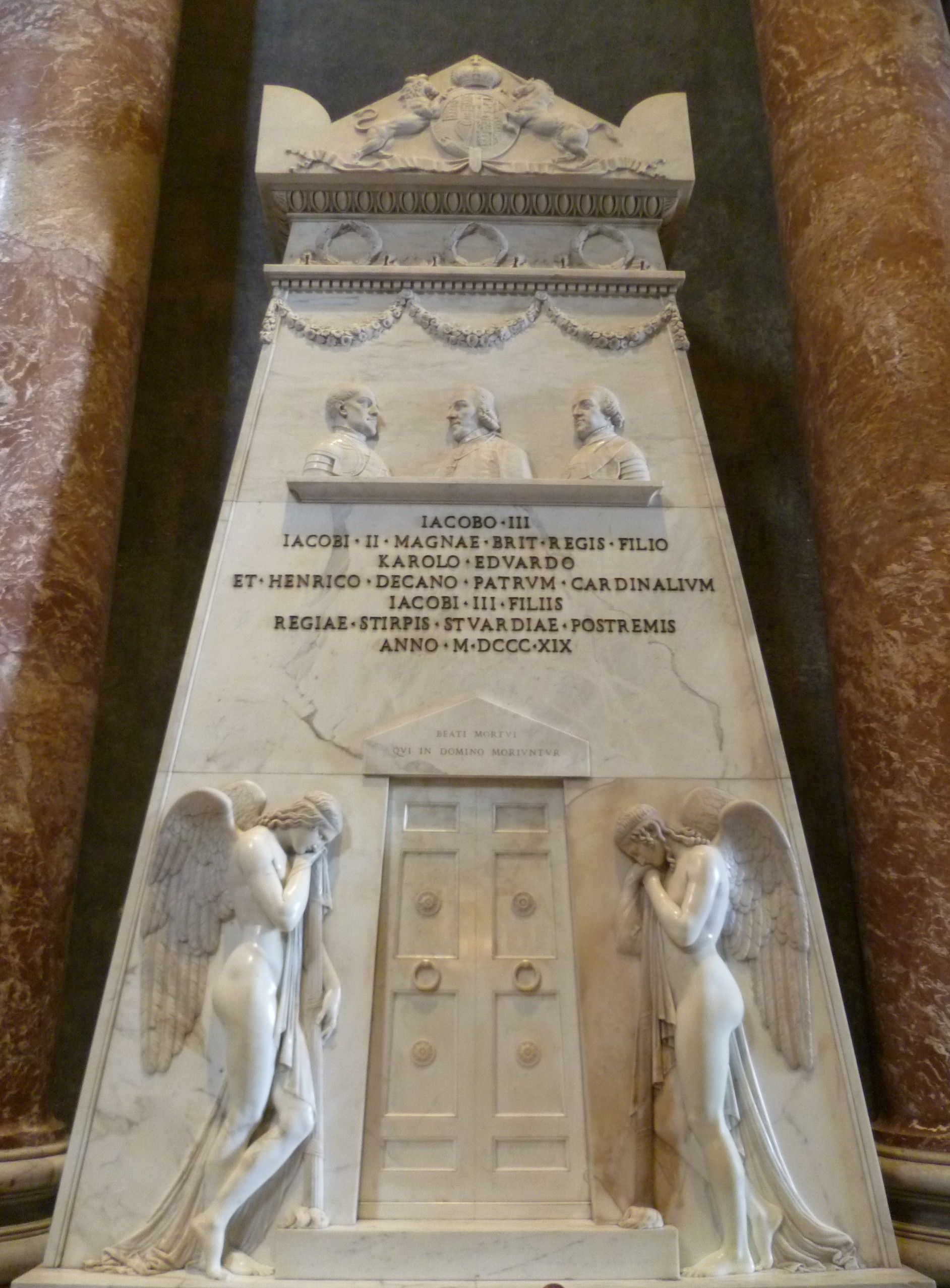 Figure 2: Monument to the Royal Stuarts by Antonio Canova, depicting James Edward Stuart, the ‘Old Pretender’ who styled himself King James III, flanked by his two sons, Charles Edward and Henry Benedict, in St Peter’s Basilica, Rome, CC. 3.0 Kim Traynor.
Figure 2: Monument to the Royal Stuarts by Antonio Canova, depicting James Edward Stuart, the ‘Old Pretender’ who styled himself King James III, flanked by his two sons, Charles Edward and Henry Benedict, in St Peter’s Basilica, Rome, CC. 3.0 Kim Traynor.
The face of the monument contains reliefs of the three men to which it is dedicated, beneath which James is named James III and Charles and Henry his sons and the ‘last of the Royal House of Stuart’. The bottom of the monument is decorated by a door, and on either side are weeping angels, their heads bowed and resting on upturned torches, in the process of being extinguished. Above the door it reads, ‘Blessed are those who die in the Lord’. This monument was a testament to the end of a life, an act of mourning and remembrance of what was lost, funded by the line of monarchs who benefited from their deposition.
In the seventy years between the making of the two monuments, the Stuarts has made a final unsuccessful attempt on the British throne, led by ‘Bonnie Prince Charlie’. When his father died in 1766, Charles’s claim to the throne was not recognised by the Pope, nor the monarchs of the surrounding Catholic nations. The Stuarts were left to their life in Rome and Florence, building lives and careers while never entirely giving up their claim to the title. The monument clearly signals the death not only of the men but the family legacy. Their grave is located as a place to mourn the end of the Stuart dynasty – the eternity signalled in Clementina’s monument is forestalled, and the work lacks the religious iconography that might suggest a divine purpose beyond the throne. The neoclassical style, associated during the period of the monument’s construction with democratic institutions, contrasts with the Baroque abundance of Clementina’s commemoration, and signals a new political future where the divine right of kings has been left behind. As a symbol of an exiled family, the monument marks the ways that transportation to a new land was accompanied by a loss of purpose for this family and so the end of its legacy. The placement of their monument not only in Rome, but in one of its most important churches, is testament to the ways the family found new opportunities for recognition and a home ‘place’, which would mark their existence for generations into the future. But the compromise of finding place after exile was also marked by significant loss; the Stuart story is left as a tragedy to be mourned by those who would remember.
Bibliography
Fiona Anderson, ‘Bernat Klein and High Sunderland: Displacement, Design and the Meanings of Home’, Journal of Design History 34, no. 4 (2021): 332-48
Katie Barclay, Elaine Chalus and Deborah Simonton, eds, The Routledge History of Loneliness (London: Routledge, 2023)
Clare Lois Carroll, Exiles in a Global City: The Irish and Early Modern Rome, 1609-1783 (Leiden: Brill, 2017)
Edward Corp, The Stuarts in Italy, 1719-1766: A Royal Court in Permanent Exile (Cambridge: Cambridge University Press, 2011)
Edward Corp, ‘The Extended Exile of James III’, in Monarchy and Exile: The Politics of Legitimacy from Marie de Medicis to Wilhelm II, ed. Philip Mansel and Torsten Riotte (Basingstoke: Palgrave Macmillan, 2021), pp. 165-180.
Iris Haist, ‘A Catholic Crown Made of Marble and Paper: The Funeral Monuments for Maria Clementina Sobiekska and James III as an Instrument of Representation of the Catholic Church’, in Fluctuating Alliances: Art, Politics and Diplomacy in the Modern Era (Berlin: De Gruyter, 2021), pp. 107-26.
Biography
Katie Barclay is Head of Historical and Classical Studies and Co-Director of the Fay Gale Centre for Research in Gender, University of Adelaide. She writes widely on the history of emotions, gender and family life. Her recent publications include Caritas: Neighbourly Love and the Early Modern Self (2021) and with Leanne Downing, Memes, History and Emotional Life (2023).


